Abstract
AIM: To develop a necropsy related audit system to record accurate information in relation to necropsy requests, necropsy rates and coronial referrals. METHODS: A simple audit form was used to record detailed necropsy related data via an integrated questionnaire design and data entry system based on available optical image scanning technology. The system recorded the numbers and locations of deaths, referrals to the coroner, clinical necropsy requests, hospital and medicolegal necropsies, the grade of clinician involved in these processes, and the identity of the consultant in charge of the case. The overall, hospital and medicolegal necropsy rates were calculated by individual consultant, specialty and for the whole hospital. Necropsy request rates and coronial referral rates were also calculated and these data were related to the grade of clinician. All data were available on a monthly or an accumulative basis. RESULTS: Of 1398 deaths, 534 (38%) were discussed with the local coroner's office and 167 of these were accepted for further investigation. House officers and senior house officers referred over 80% of all cases, whereas consultants referred only 2%. There were no significant differences in case acceptance rates by grade of clinician. Clinicians made 307 hospital necropsy requests (overall hospital necropsy request rate 22%). House officers made 65% of all necropsy requests. Consultant necropsy requests represented 13% of all requests. There were no significant differences in necropsy request success rates by grade of clinician. CONCLUSIONS: The referral of cases to coroners and clinical necropsy requests are still being inappropriately delegated to the most junior clinicians. This study illustrates the type of useful information which can be produced for individual clinicians, specialty audit groups and pathology departments using a simple necropsy related audit system.
Full text
PDF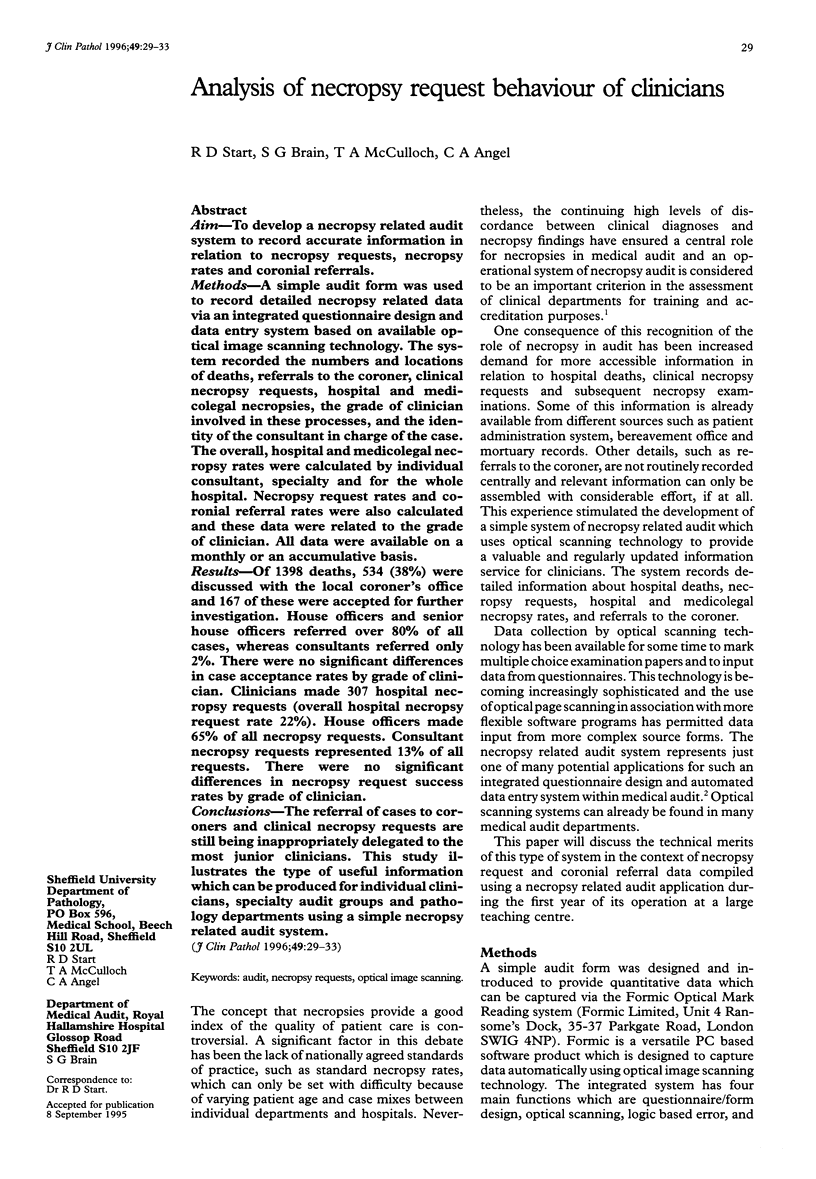
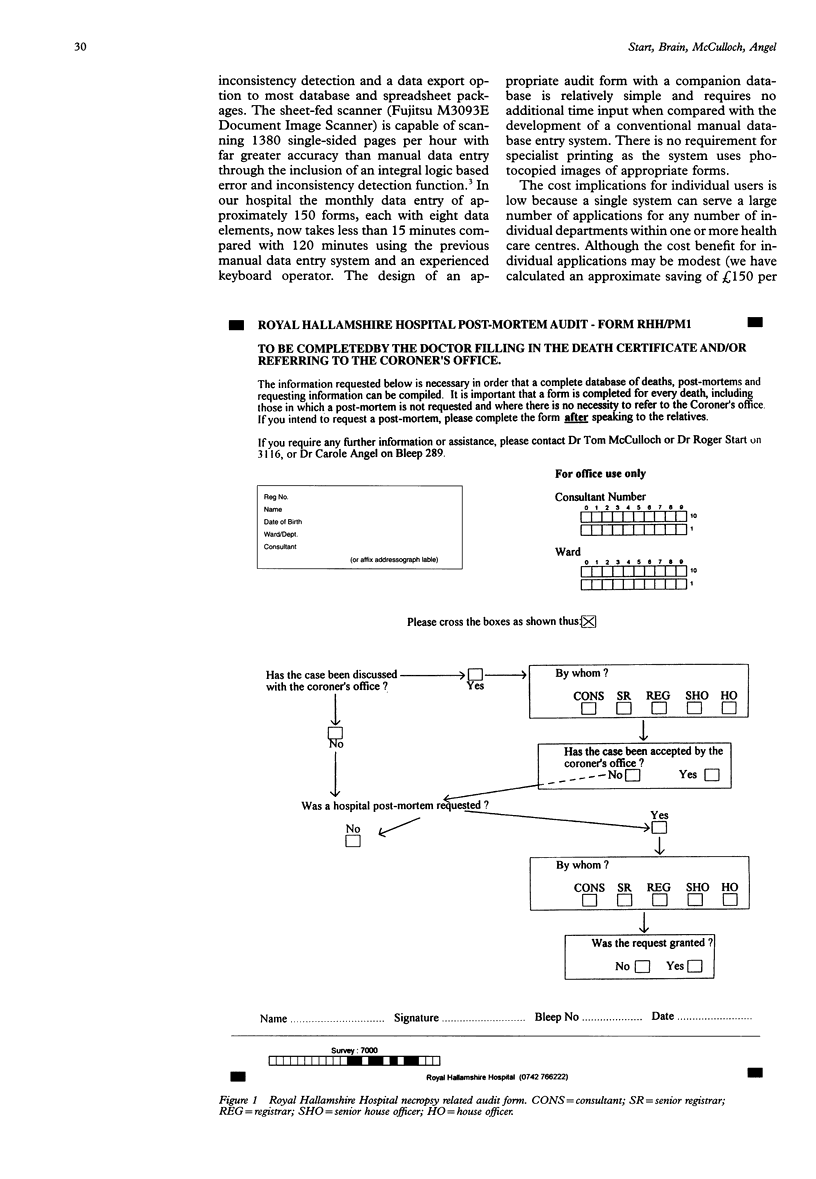
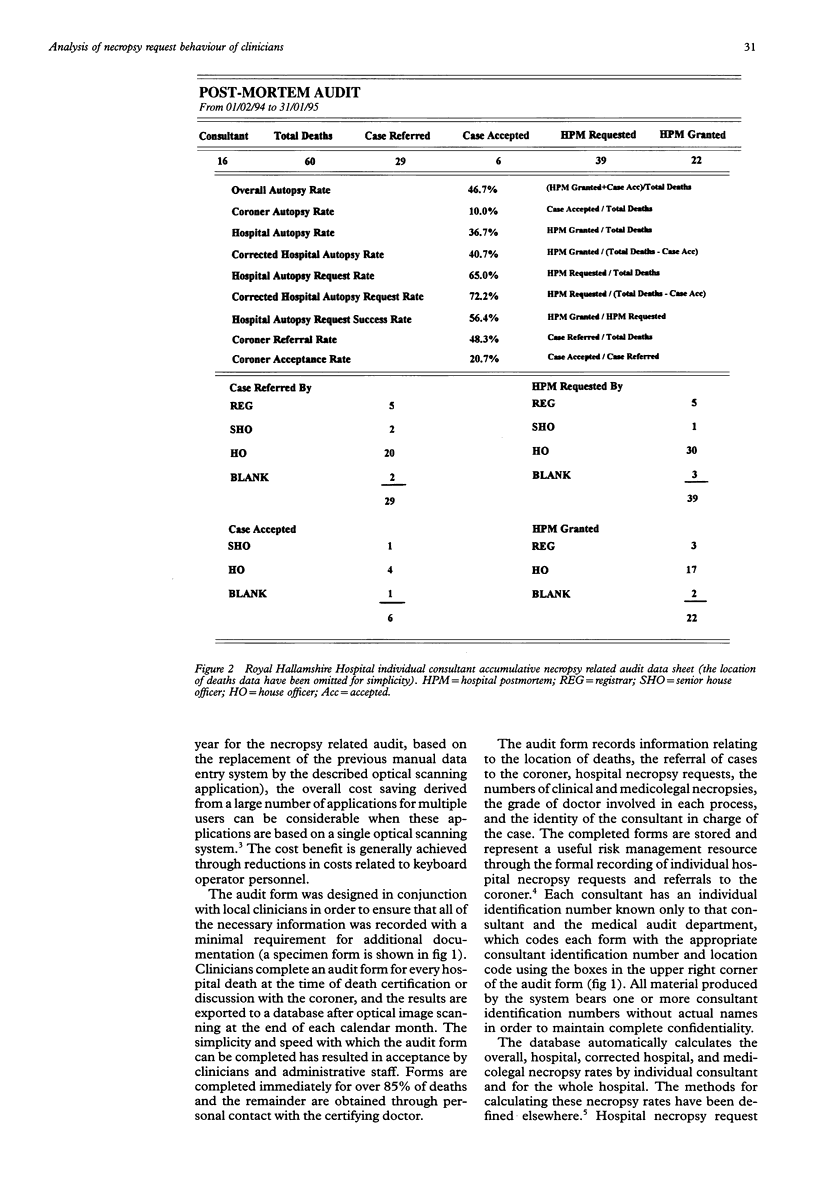
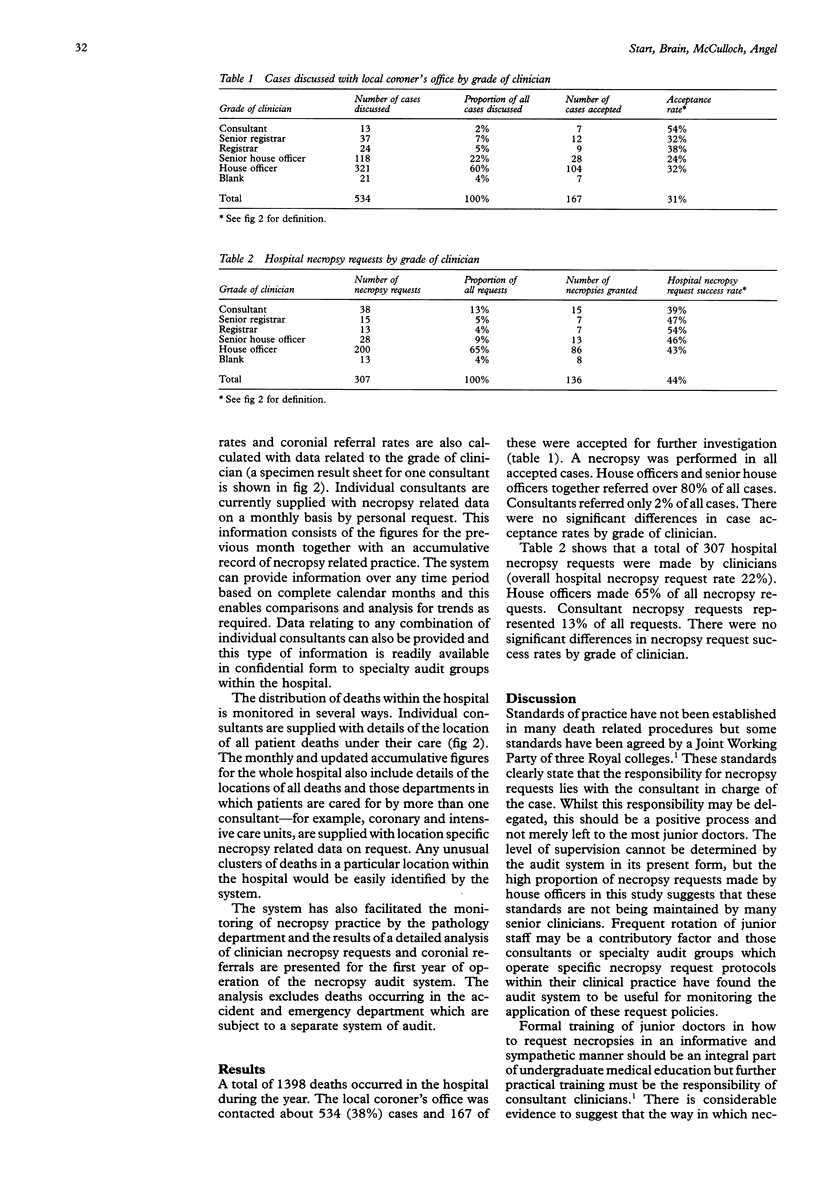
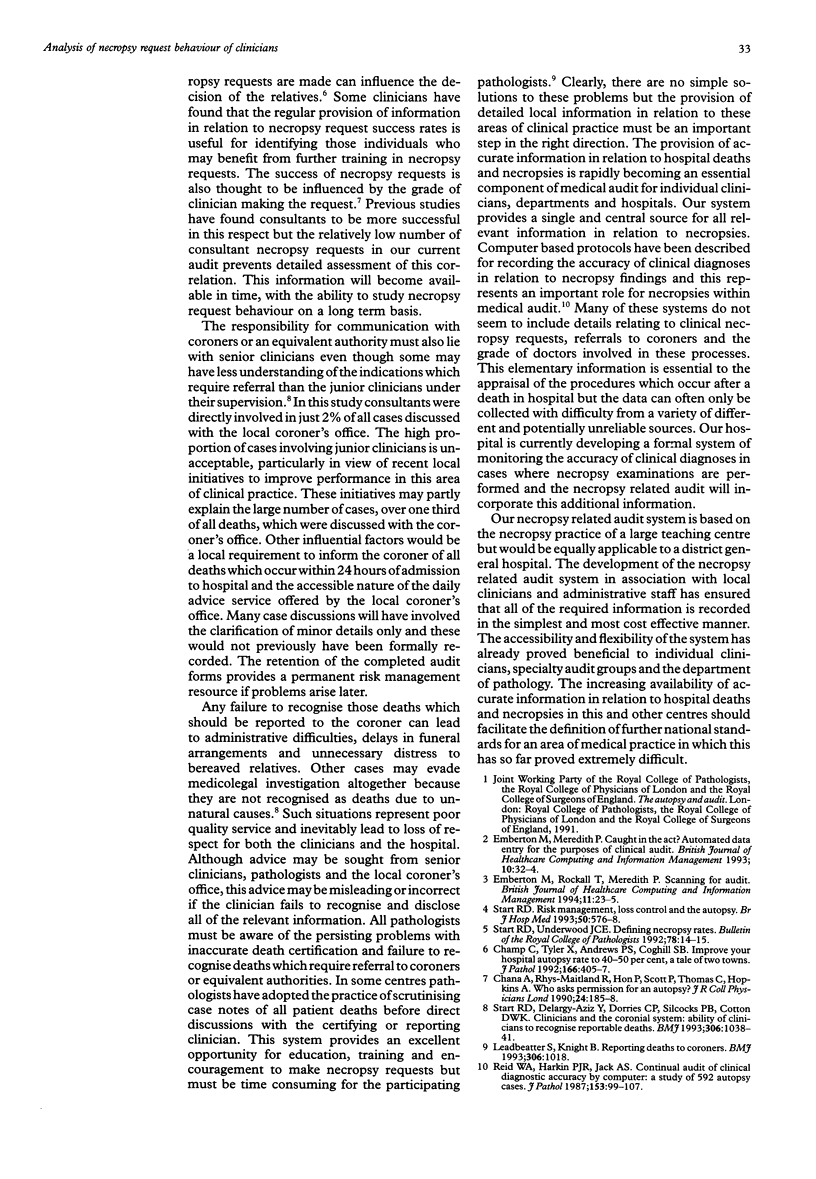
Selected References
These references are in PubMed. This may not be the complete list of references from this article.
- Champ C., Tyler X., Andrews P. S., Coghill S. B. Improve your hospital autopsy rate to 40-50 per cent, a tale of two towns. J Pathol. 1992 Apr;166(4):405–407. doi: 10.1002/path.1711660413. [DOI] [PubMed] [Google Scholar]
- Chana J., Rhys-Maitland R., Hon P., Scott P., Thomas C., Hopkins A. Who asks permission for an autopsy? J R Coll Physicians Lond. 1990 Jul;24(3):185–188. [PMC free article] [PubMed] [Google Scholar]
- Leadbeatter S., Knight B. Reporting deaths to coroners. BMJ. 1993 Apr 17;306(6884):1018–1018. doi: 10.1136/bmj.306.6884.1018. [DOI] [PMC free article] [PubMed] [Google Scholar]
- Reid W. A., Harkin P. J., Jack A. S. Continual audit of clinical diagnostic accuracy by computer: a study of 592 autopsy cases. J Pathol. 1987 Oct;153(2):99–107. doi: 10.1002/path.1711530203. [DOI] [PubMed] [Google Scholar]
- Start R. D., Delargy-Aziz Y., Dorries C. P., Silcocks P. B., Cotton D. W. Clinicians and the coronial system: ability of clinicians to recognise reportable deaths. BMJ. 1993 Apr 17;306(6884):1038–1041. doi: 10.1136/bmj.306.6884.1038. [DOI] [PMC free article] [PubMed] [Google Scholar]
- Start R. D. Risk management, loss control and the autopsy. 1993 Nov 17-Dec 14Br J Hosp Med. 50(10):576–578. [PubMed] [Google Scholar]


